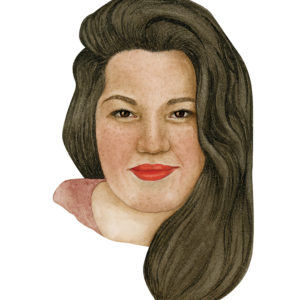A century after Dixon’s Chili opened, Stephen Steffes—the general manager and great-great-nephew of founder Vergne Dixon—realized he didn’t know the restaurant’s exact birthday. So he started dusting off the memorabilia that’s been in his family for four generations and rediscovered a recording of former president Harry S. Truman talking about Dixon’s.
“When we were celebrating our hundred-year anniversary, we weren’t sure the exact date we opened, and I finally listened to it,” Steffes says. “And there’s Harry Truman, and he says: ‘You want to know when Dixon’s Chili opened? I’ll tell you, because I was there. It was August 10, 1919.’”
In 1950, after LIFE Magazine published a spread with Truman enjoying lunch there, Dixon’s Chili became Dixon’s Famous Chili. The presidential favor gave Dixon’s notoriety. The chili—served on a plate, never in a bowl—is the main ingredient for every dish, but the dishes themselves range from tacos to tamales to spaghetti. On a fact-finding excursion with the Truman Library Institute, Steffes uncovered the origin for this unique style of chili: “They said the way we cook our chili— the meat and beans separate and the do-it-yourself method—that’s the way they do it in the military,” he says. “That’s why Harry liked it, because that’s the way he had it when he was in the army.”
Dixon’s Burger & Dog
Uncle Vergne banned ketchup, and when customers would smuggle it in, he would ban them, too. Today, Steffes keeps a bottle or two of the condiment around—and he charges anyone who asks for it a fifteen-cent “fine” as a nod to tradition. But if you order the Dixon’s burger or the chili dog, you can avoid the fee. “For those, we combine the meat and the beans with meat juice, chili powder and ketchup, and it looks more like a homemade chili paste,” Steffes says.
The Plate
If you are new to Dixon’s, the staff will prime you for the experience with a series of statements: The chili is served on a plate, not in a bowl. It is not tomato-based. The beans (Jack Rabbit pink beans) and meat (nineteen-percent-fat ground beef from L&C Meats in Independence) are cooked separately. You ask for it “soupy” (with bean broth) or “juicy” (with meat juice) or both or neither. And when it arrives at your table, you’re supposed to dress it up yourself: For a few extra cents, you can add shredded cheese, sour cream, diced onions or jalapeno relish.
“We’ve had people who try it just as it comes and they’re like, ‘I don’t like it,’ but that’s not how you’re supposed to eat it,” Steffes says. “You need to fix it. I have ten different ways I like it.”
Spaghetti
In the seventies, Vergne’s son Vince Dixon expanded the menu by adding burgers, tacos and spaghetti chili—that is, Cincinnati-style spaghetti noodles topped with beans or meat (or both). Steffes himself eats that dish a few times a week. “It’s hearty, it’s filling, it’s the best combination of two great dishes,” he says.
Tacos
In the early aughts, Dixon’s made waves when Steffes’ sister had the idea to boost summer sales by introducing “taco mania.”
“People think of chili and cold weather, and we’re twice as busy on a cold day than on a summer day,” Steffes says. “We used to close in July and August because business would be that slow.”
Tacos (meat, cheese and lettuce in a hard shell) debuted as an all-you-can-eat special, then stuck around on the regular menu.
Chili Powder & Vinegar & Mustard
On every table at Dixon’s, you’ll find a basket of crackers, a shaker of the house-blend chili powder, vials of regular and pepper-infused vinegar and a squeeze bottle of spicy mustard (brown mustard mixed with Dixon’s spicy vinegar).
“It sounds weird, but my whole family and the employees and regulars, the first thing they do is open the crackers and put mustard on it,” Steffes says. “And some people can’t eat without the spicy vinegar. Since I’ve been alive, that’s always been on the table, and it’s in all the old pictures. It must have been something Vergne had done.”
Tamale Spread
The tamale spread is one of Dixon’s most popular items, and Steffes says it’s been on the menu since the beginning. For the first eighty-five years of business, the tamales came from Ford’s in Kennett, Missouri. When Ford’s went out of business, Steffes searched for a replacement.
“The originals were called ladyfinger tamales,” he says. “Two ounces of spiced beef wrapped in cornmeal. We served three to a plate.” Since 2016, the plate has been a single six-ounce tamale from Senor Tamales of St. Louis.
GO: 9105 E. US Hwy 40, Independence. 816-861-7308, dixonschili.com






